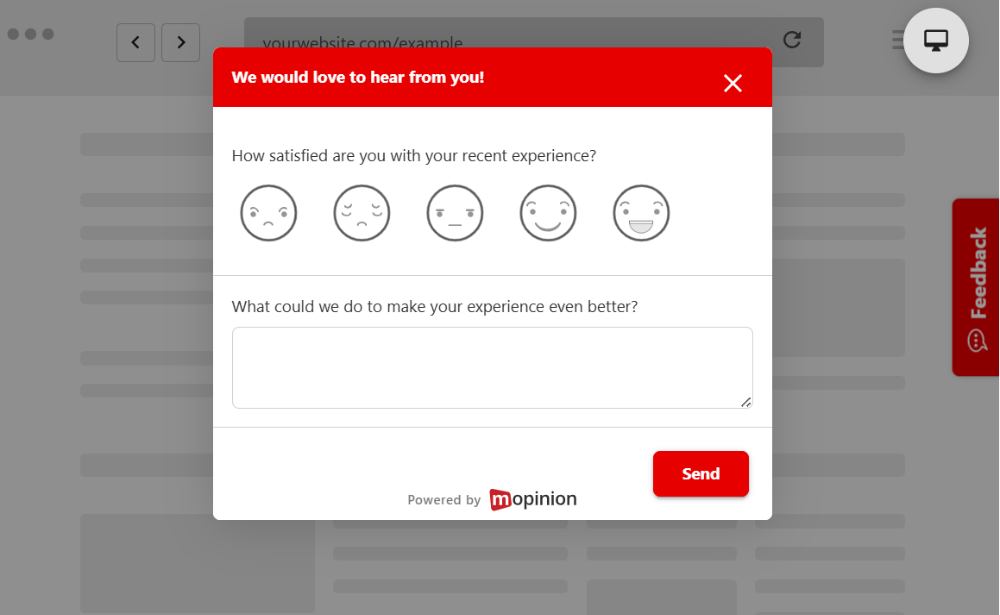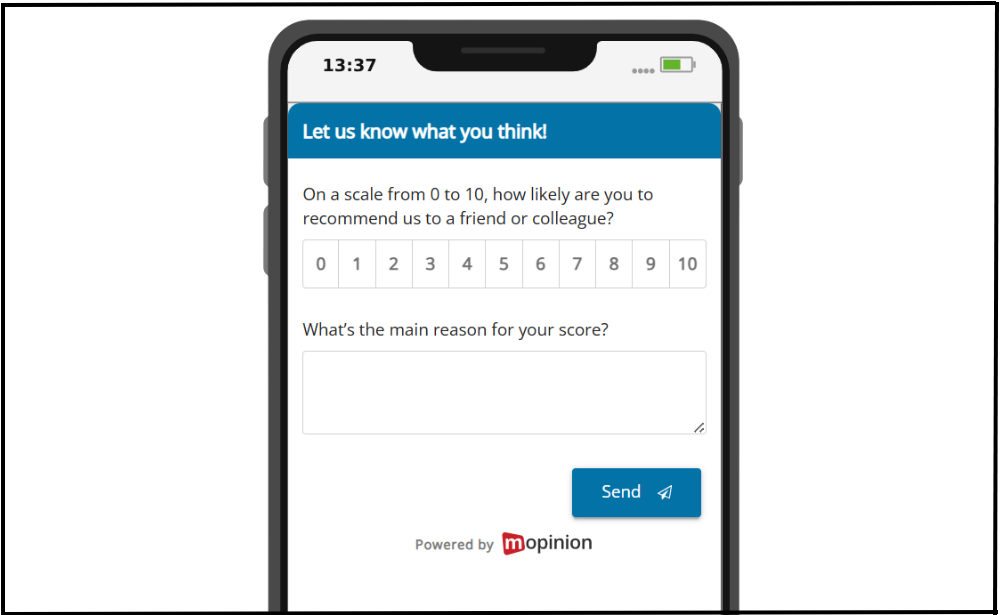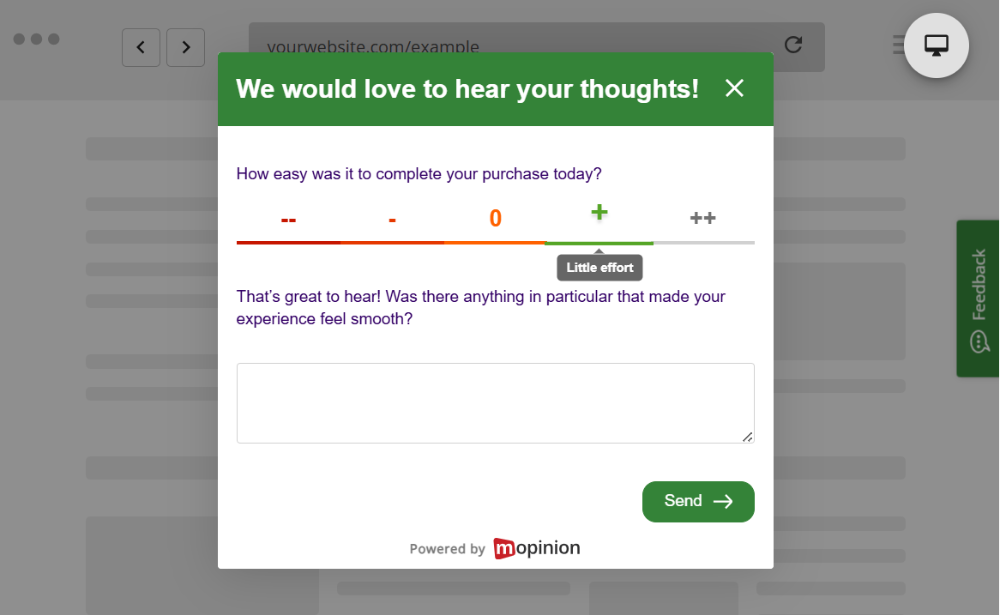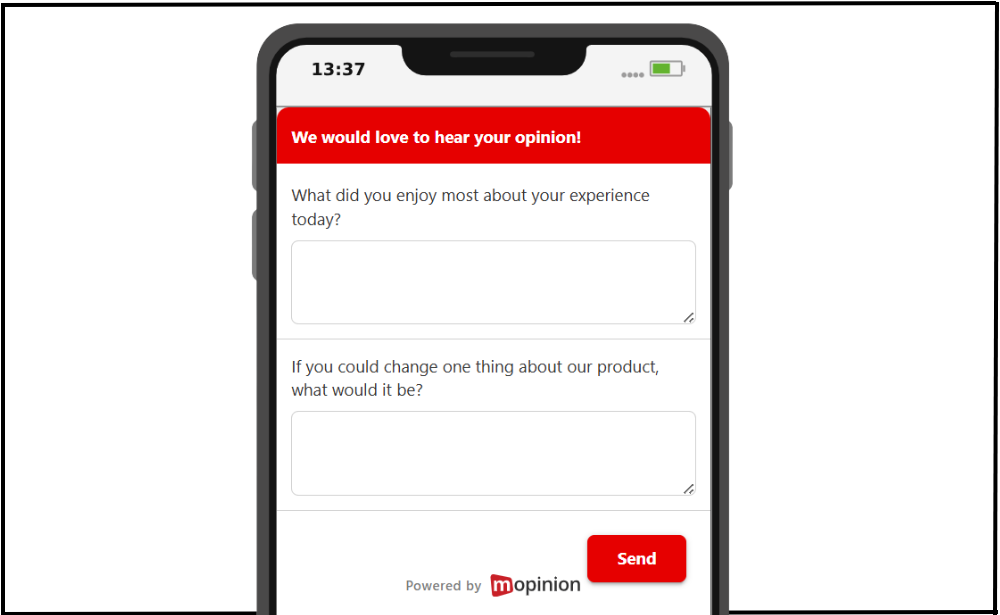Voice of the Customer questions are powerful because you can’t improve what you don’t understand. These questions go beyond polite answers and vanity metrics, they uncover the why behind emotions, frustrations and expectations.
And here’s the thing: every “It’s fine” hides a story. When you take the time to uncover it, you unlock insights that can genuinely transform your customer experience.
But knowing VoC is important is one thing…
Knowing which questions actually lead to honest, useful answers is another.
So how do you choose the right questions?
Which ones give you deeper insights instead of generic responses?
And how do you make sure customers actually want to answer them?
That’s exactly what we’ll explore in this blog, with practical examples, proven question types and best practices to help you get the most value out of your Voice of the Customer (VoC) questions.
In this blog, you will learn:
- What is voice of the customer (VoC)?
- Why asking the right questions matter?
- The most valuable types of VoC questions (with examples)
- How to design a voice of the customer survey that works
- Tools that bring the voice of the customer to life
- Ready to start taking action?
What is voice of the customer (VoC)?
Voice of the Customer is the practice of listening to your customers across every touchpoint and understanding what truly drives satisfaction or frustration. You do this by gathering and analysing feedback about your business, products, services, or even your digital channels themselves.
Typical sources include surveys, support calls, reviews, social media, or on-page feedback tools. And since Mopinion specialises in digital feedback, this blog will focus mainly on online channels such as websites, mobile apps and email.
But VoC is more than a data-collection method. It’s a mindset.
A mindset that says: we don’t assume, we ask!
When you embrace VoC, you stop designing experiences based on guesswork and start shaping them around real human needs.
With strong VoC insights, you can:
- Spot friction before it turns into frustration
- Build products people genuinely care about
- Strengthen loyalty and advocacy
- Deliver experiences that feel personal, not generic

Do you want to see how this looks in practice?
Explore How to Ask for Website Feedback to learn how small question tweaks can change everything.
Why asking the right questions matter?
Not all feedback is created equal.
A poorly timed or poorly written question can leave you with pages of vague answers that don’t actually tell you what to fix. That’s why the quality of your questions and where you place them, determines the quality of your insights.
It’s not just what you ask, but when you ask it.
Here’s what that looks like in practice:
“Are you satisfied with our service?”
- Great for post-purchase emails, delivery follow-ups or support evaluations.
- It gives you a high-level view of overall satisfaction, especially when paired with a follow-up like “What’s the main reason for your score?”
“Did you find what you were looking for?”
- Ideal for information-heavy pages such as FAQs or help centres.
- It tells you whether your content actually answers users’ questions.
“How hard was it to complete your purchase today?”
- Perfect for checkout or thank-you pages, where you want to understand friction in the buying journey.
Each question serves a different purpose.
Placing the right question at the right moment is what turns surface-level feedback into insights you can actually act on.
As the Nielsen Norman Group points out, even small changes in wording, tone or order can completely shift the quality of your responses, which is why thoughtful question design is so important for meaningful VoC insights.
If you want to go a step further, check out Customer Experience Survey: Tips and Questions to see how context-driven questions lead to stronger, more accurate feedback.
The most valuable types of VoC questions (with examples)
Let’s look at the key question types that turn vague responses into valuable insights.
1. Customer Satisfaction (CSAT)
CSAT questions measure how happy customers are with a specific product, feature, or interaction.
Examples:
“How satisfied are you with your recent experience?”
“What could we do to make your experience even better?”
Where this belongs: in post-purchase pages, support interactions or follow-up emails.
Use these to spot friction early and make quick, visible improvements that customers notice.

2. Net Promoter Score (NPS)
NPS is the gold standard for measuring loyalty, but the why behind the score is where the magic happens.
Examples:
“On a scale from 0 to 10, how likely are you to recommend us to a friend or colleague?”
“What’s the main reason for your score?”
Where this belongs: in post-purchase emails, thank-you pages or quarterly check-ins.

This combination tells you what drives promoters and what’s holding detractors back, giving you an actionable roadmap for improvement.
3. Customer Effort Score (CES)
The easier you make your customers’ lives, the more likely they are to come back.
Example:
“How easy was it to complete your purchase today?”
Follow-up:
“That’s great to hear! Was there anything in particular that made your experience feel smooth?”
Or for high effort:
“What made this task harder than expected?”
Where this belongs: on checkout pages, thank-you pages or after users complete a key task.
A low effort score means you’re doing something right. A high effort score signals friction, your cue to simplify and streamline.

4. Open-Ended Questions
Numbers tell you what happened. Open-ended questions tell you why.
Examples:
“What did you enjoy most about your experience today?”
“If you could change one thing about our product, what would it be?”
Where this belongs: as follow-ups to CSAT/NPS/CES or on pages where you want deeper insight.
These answers often hold the most unexpected insights, the kind that spark innovation.

How to design a voice of the customer survey that works
So you know what to ask, now let’s make sure people actually answer.
Follow these principles to design surveys that engage rather than exhaust:
1) Keep it short and focused.
Five to ten questions are plenty. Respect your audience’s time and they’ll reward you with thoughtful answers.
2) Speak their language.
Keep it simple, authentic and conversational, the way real people talk.
3) Mix question types.
Blend quantitative (CSAT, NPS) with qualitative (open-ended) to capture both data and emotion.
4) Ask at the right time.
Timing is everything. Trigger surveys after key moments, a checkout, a support chat, or a demo signup.
5) Always close the loop.
Let customers know their voice was heard. Even a short follow-up like “Thanks for your feedback, here’s what we’re improving” builds trust and loyalty.
Collecting feedback the right way really pays off. When it’s structured and timely, you get insights that are sharper, cleaner and actually useful.
The classic Voice of the Customer study from MIT Sloan takes this even further. It shows that VoC is most powerful when you don’t just collect feedback, you translate it into decisions.
The researchers break customer needs down into clear, structured layers so teams can see what truly matters, what’s nice to have and what needs attention first.
In simple terms: VoC becomes a practical design tool. When you connect customer feedback directly to how you build products, shape services or improve processes, the improvements you make aren’t guesses, they’re anchored in what customers actually need.
And that’s what leads to changes that last.
Related read: Website Feedback Examples That Actually Work
Tools that bring the voice of the customer to life
Collecting feedback is one thing. Understanding it is another.
That’s where Mopinion comes in, your all-in-one platform for collecting, analysing and acting on customer feedback.
With Mopinion, you can:
- Gather feedback across websites, mobile apps and email
- Combine quantitative data with open comments for full context
- Instantly identify trends using AI-powered Smart Recaps
- Visualise insights in dashboards and share them across teams
In other words: Mopinion doesn’t just collect feedback, it helps you do something with it.
Ready to start taking action?
Voice of the Customer questions aren’t just a feedback tactic, they’re your bridge to understanding.
Every question you ask is a chance to see your business through your customer’s eyes. Every answer is a clue to doing better.
Because your customers are already telling you what they need, the smartest brands are simply the ones that listen.
So start small. Ask bold questions!
And let your customers guide your next great decision.
Ready to see Mopinion in action?
Want to learn more about Mopinion’s all-in-1 user feedback platform? Don’t be shy and take our software for a spin! Do you prefer it a bit more personal? Just book a demo. One of our feedback pro’s will guide you through the software and answer any questions you may have.






